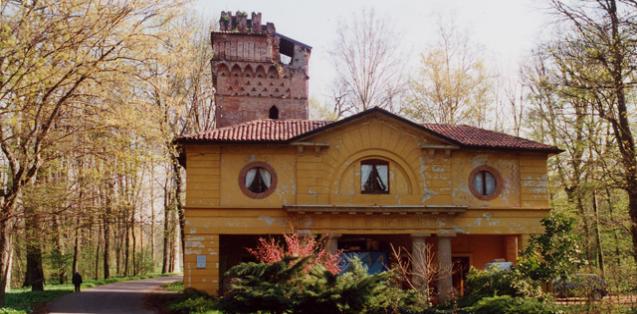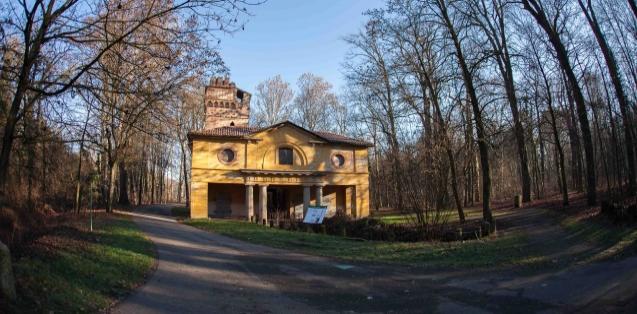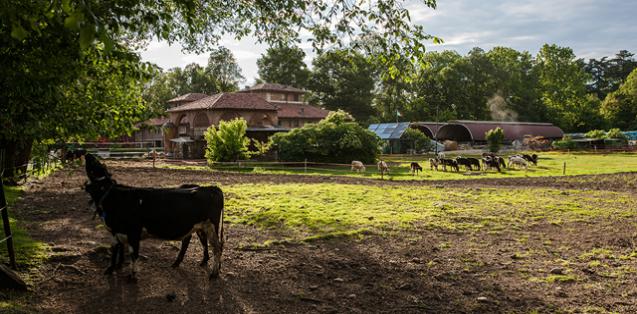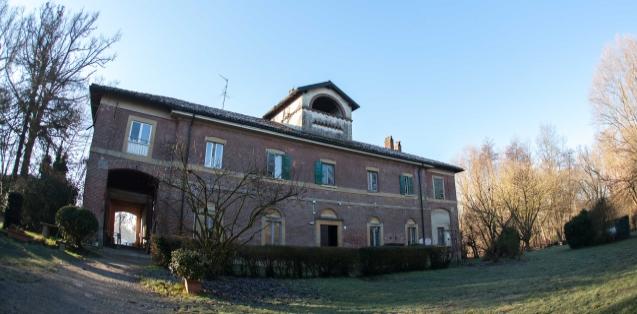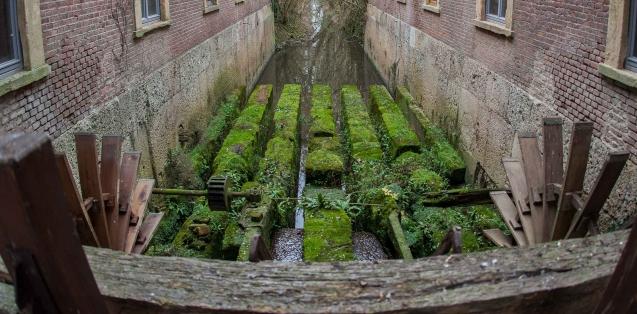Monza rose along the river Lambro, which crosses the city from the north to the south. In the past the river was the centre of the everyday life and along its banks many activities took place. Various mills were built which used the water as motor power.
Inside the Park of Monza you can still find three mills of 18th century taste which now houses residences or agricultural activities.
Behind Villa Mirabello, at the centre of a wooded area on a bight of the river Lambro, there is the Mulino del Cantone (Cantone Mill), restructured by the the architect Giacomo Tazzini, who adapted a pre-existing building, probably an ancient relic of the past defense line which protected Monza. The distinctive little crenellated tower (made of bricks and not plastered unlike the rest of the building) is an interesting Medieval remain expressly left incomplete, according to the Romantic taste for ruins of the 18th century.
Further on, near the river Lambro, you find the Mulini Asciutti (Dry Mills), the only mill still preserving a functioning wheel and the original machanism. Built in 1834 following the project by Giacomo Tazzini, it is composed by two parallel buildings connected by a porch. Today it is still possible to admire the ancient gears, the ancient millstones, the granary and a small oven for bread baking. Now the mill houses CREDA (a research and environmental education centre), which offers environmental education labs and bread making labs for children.
Little further, the Mulino San Giorgio (Saint Georges Mill), already present in 17th century, was re-designed by Tazzini in 18th century. Settled on the eastern border of the Park, it still preserves its original structure and the charm of water mills, that, when operating, were activated by a canal diverted from the Lambro. Today it hosts animal husbandry and milk and yogurt production. Grazing cows, horses, donkeys, sheeps and goats can be seen.
In the city centre too there were numerous mills using the water of the river Lambro as an engine for corn grinding. Today remains only the Mulino Colombo, a monument of industrial archeology with a millstone, a press and original tools. Already operating at the beginning of the 18th century, it was originally used to grind the wheat, then for wool fulling and lastly as a olive oil mill.
The importance of the river Lambro is proven by the presence - even today - of 31 ancient mills, situated along the northern banks of the river, in the Valle Lambro Park.


